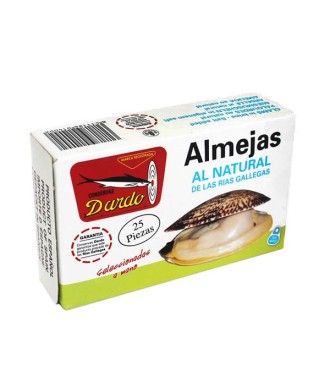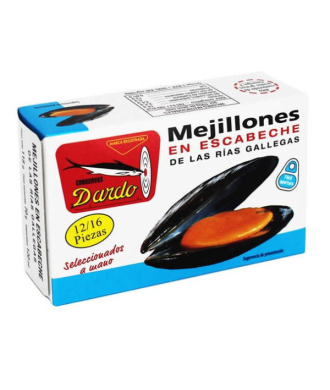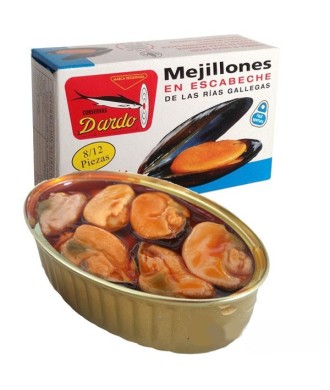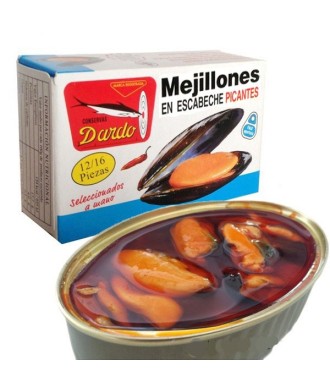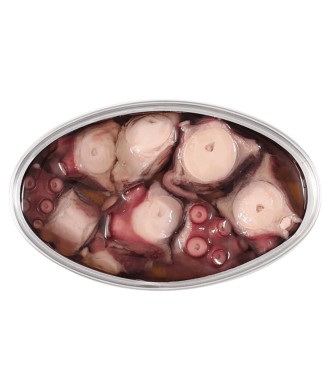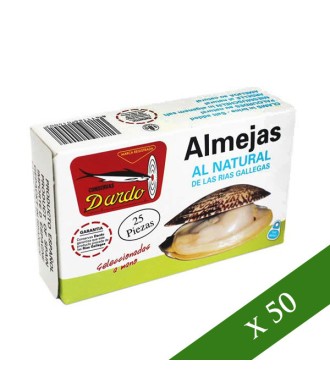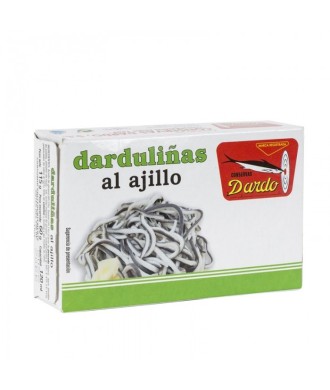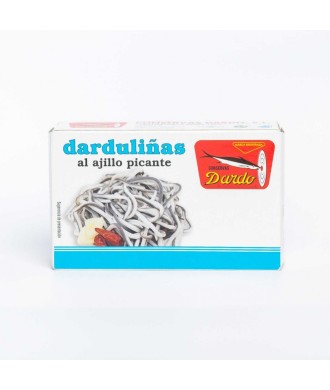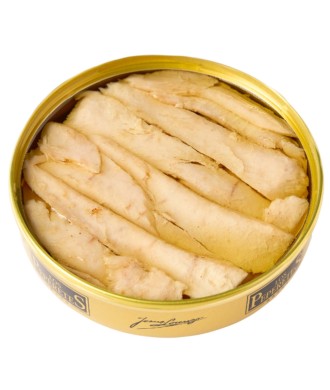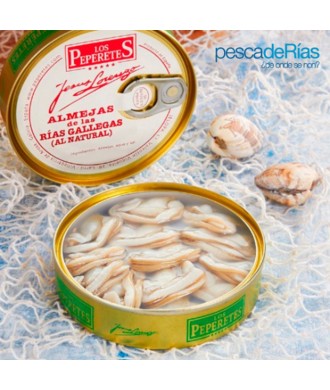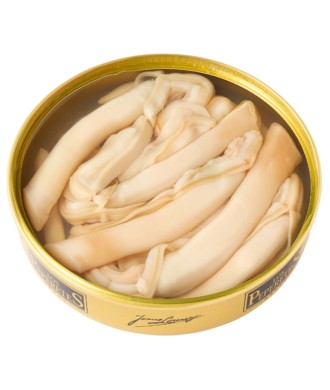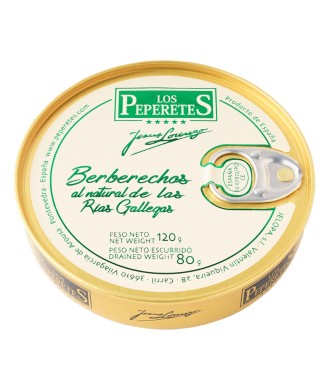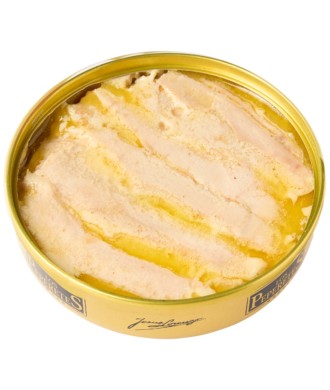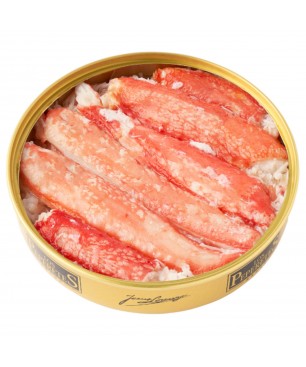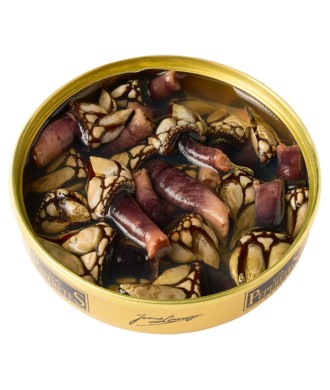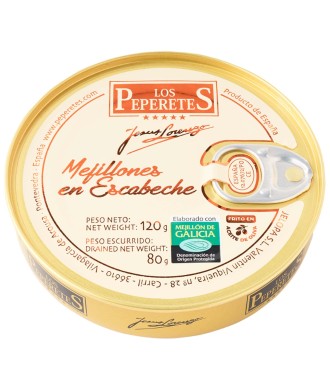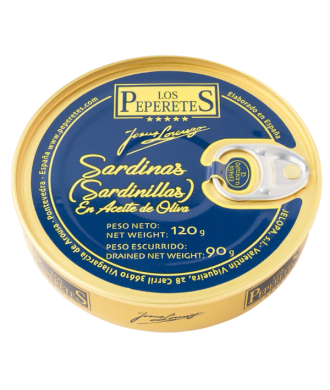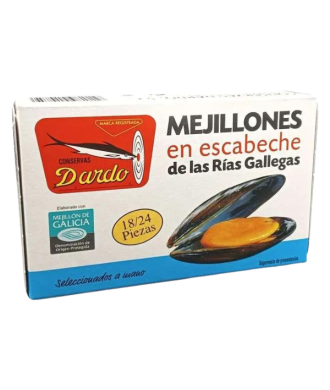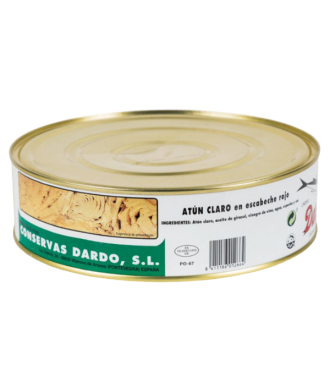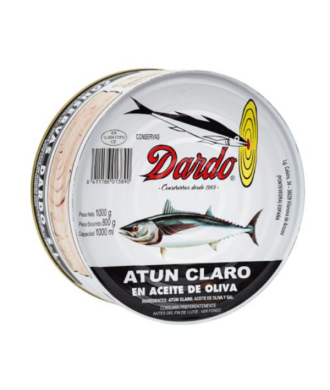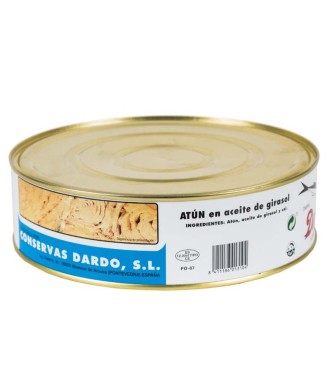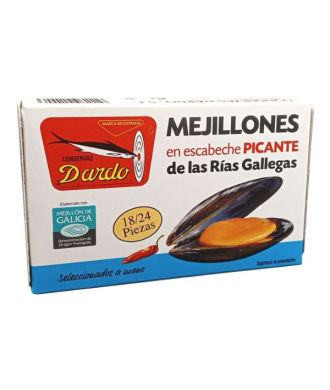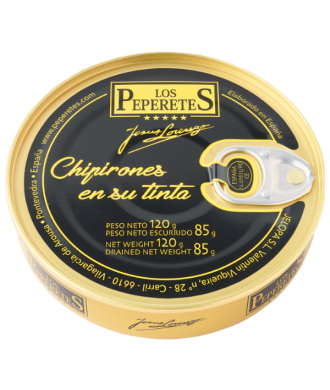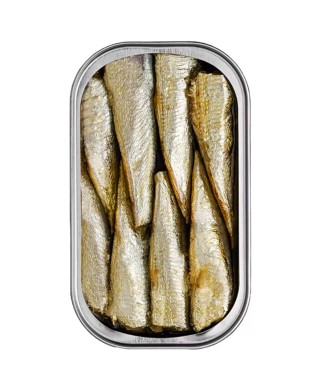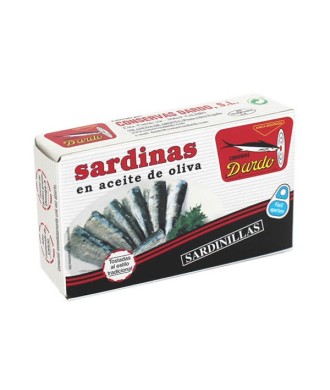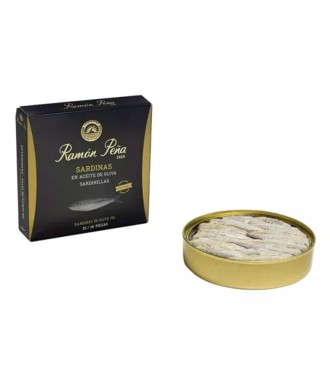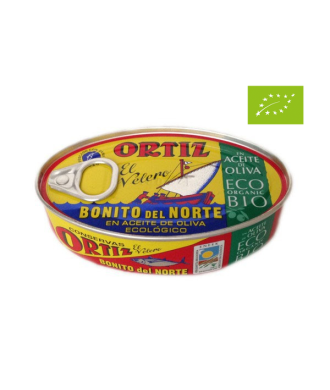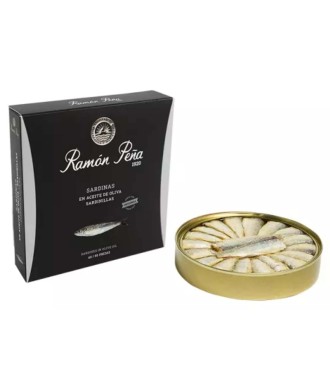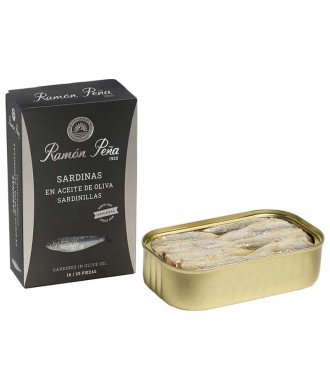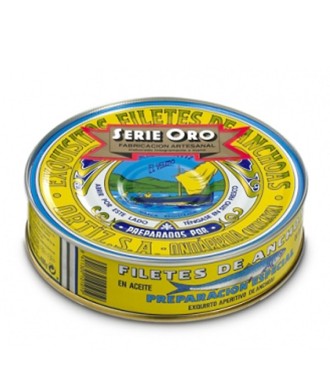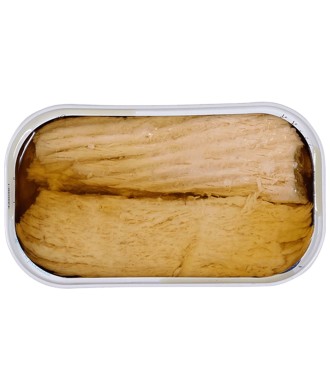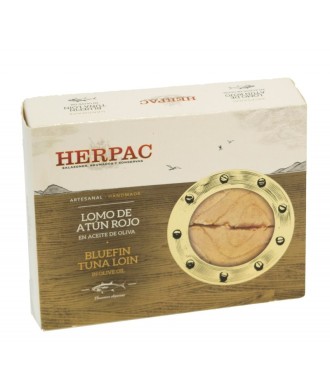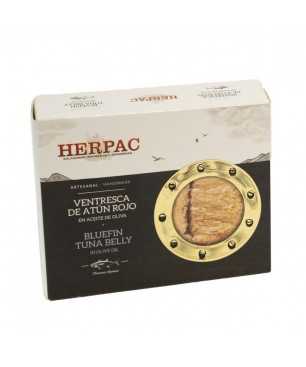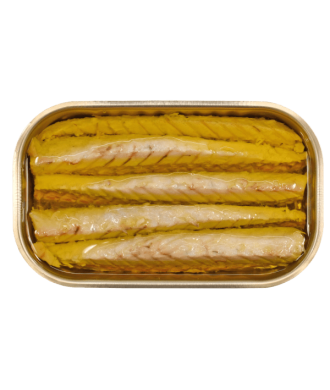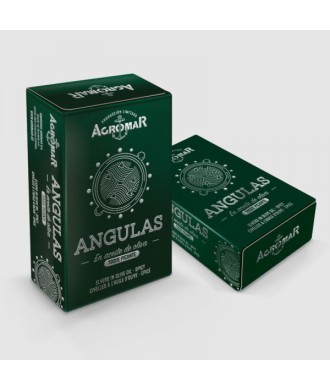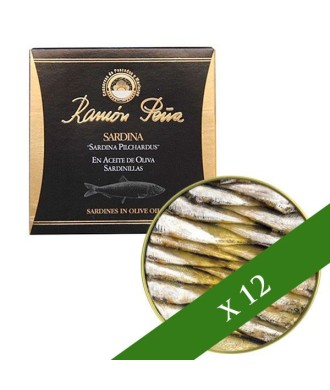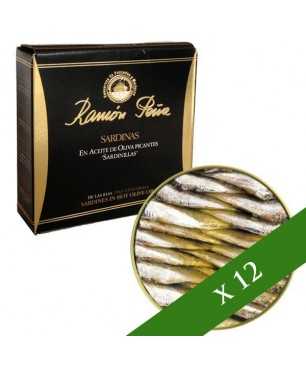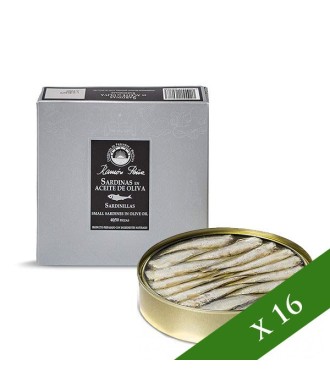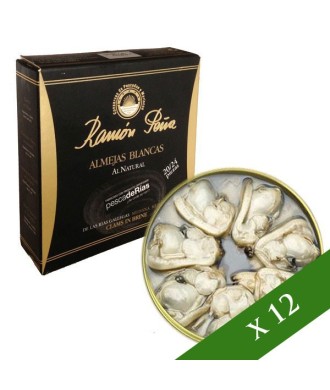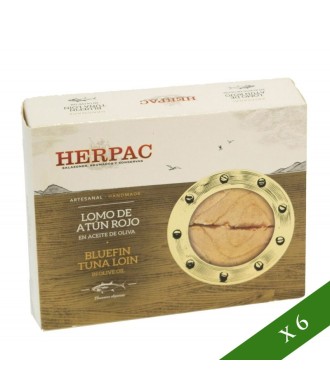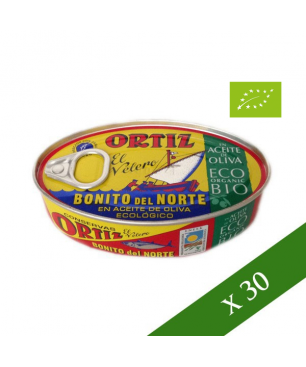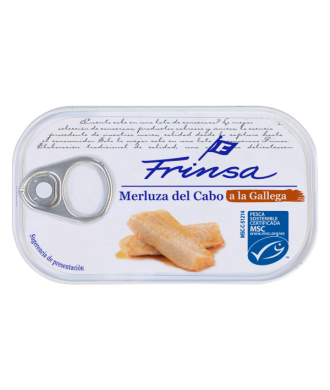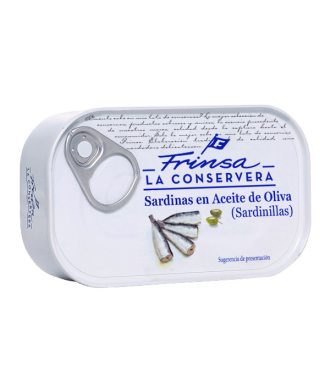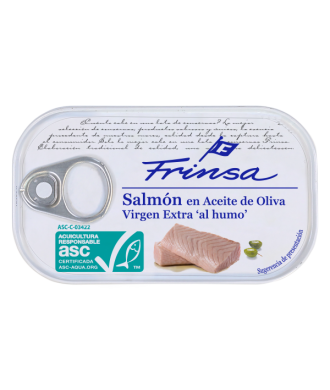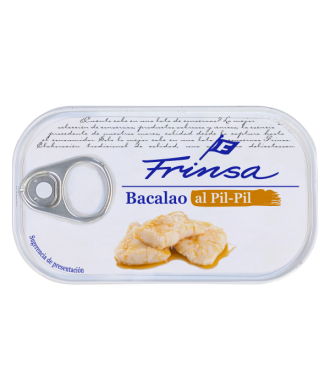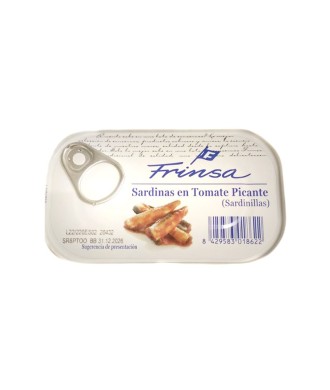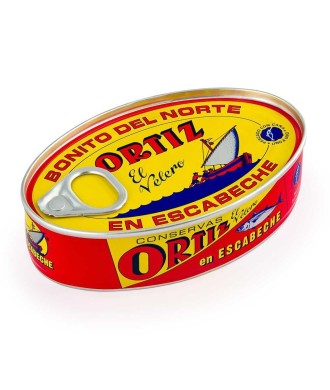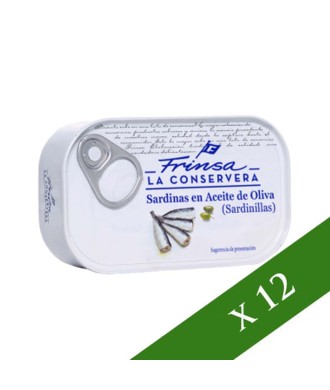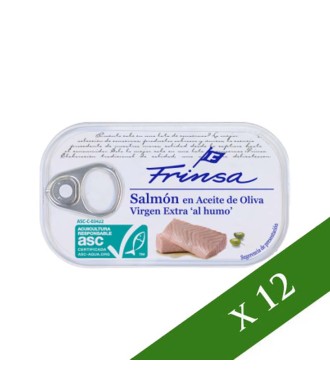This website uses its own and third-party cookies to improve our services and show you advertising related to your preferences by analyzing your browsing habits. To give your consent to its use, press the Accept button.
Cookie preferences
| Cookie | Provider | Purpose | Expiry |
|---|---|---|---|
| PHP_SESSID | www.jamonarium.com | The PHPSESSID cookie is native to PHP and allows websites to store serialised status data. On the website it is used to establish a user session and to pass state data through a temporary cookie, which is commonly known as a session cookie. These Cookies will only remain on your computer until you close your browser. | Session |
| PrestaShop-# | www.jamonarium.com | This is a cookie used by Prestashop to store information and keep the user's session open. It stores information such as currency, language, customer ID, among other data necessary for the proper functioning of the shop. | 480 hours |
| rc::a | It is used to read and filter bot requests. | Persistent | |
| rc::c | It is used to read and filter bot requests. | Persistent |
| Cookie | Provider | Purpose | Expiry |
|---|---|---|---|
| ads/ga-audiences | These cookies are used by Google AdWords to re-engage visitors that are likely to convert to customers based on the visitor’s online behaviour across websites. | Session |
| Cookie | Provider | Purpose | Expiry |
|---|---|---|---|
| _ga | Registers a unique ID that is used to generate statistical data on how the visitor uses the website. | 2 years | |
| _gat | Used by Google Analytics to throttle request rate | 1 day | |
| _gat_gtag_UA_# | Used to throttle request rate. | 1 minute | |
| _gd# | This is a Google Analytics Session cookie used to generate statistical data on how you use the website which is removed when you quit your browser. | Session | |
| _gid | Registers a unique ID that is used to generate statistical data on how the visitor uses the website. | 1 day |
Excellent 
-
Ham
- Whole with bone
-
Boneless
- Cut in slices
- Whole sliced
- Ham types
-
Bellota Ibérico 100% Pata Negra Ham
-
Jabugo (Huelva) Ham
- Salamanca Hams
- Extremadura Hams
- Los Pedroches
- .Jamón ecológico
- Bellota Ibérico 50% Ham
- Cebo de Campo ibérico Ham
- Cebo ibérico Ham
- Serrano Gran Reserva Ham
- Jamones Joselito
- Sausages
- Whole Dry-cured Sausage
- Sliced Dry-cured Sausage
- Iberico sausages
- León Sausages
-
Types of sausages
- Cheeses
- Whole cheese
- Cheese in portion
- Sheep Cheese
- Cow Cheeses
- Goat Cheeses
- Dry Cured Cheeses
- Semi Cured Cheeses
- Cheese Packs
-
Cheese Brands
- DO Idiazabal
- Sant Gil Albió
- Mas El Garet
- Viriato
- Zanetti
- Dorrea
- Beiardi
- Rosario Castaño
- Other cheese brands
- Gourmet
- Foie Gras & Pâtés
- Seafood
-
Spanish Canned Fish
- Tradicional Dishes
- Olives & Appetizers
- Pulses & Vegetables
- Deserts
- Packs with Gourmet Products
- Gourmet Cans in BOXES
- Gourmet - Brands
- Ramón Peña
- Mas Parés
- Agromar & Arbeyal
- Imperia
- Dardo
- Ortiz
- Paco Lafuente
- Yurrita
- Marzo
- Casa Riera Ordeix
- Frinsa
- Ribeira
- Herpac
- Greco Foie Gras
- La Luna
- Los Peperetes
- Bodega Coruña del Conde
- Pago de los Capellanes
- Oil
- Arbequina
- Picual
- Cornicabra
- Manzanilla
- Vinegar and dressings
- Hojiblanca
- Coupage
- Organic
- Olive oil in BOX
- Olive oil in Cans
- Large Format Olive Oil
- Premium Olive Oil
- Olive Oils with Awards
- Olive Oil Packs
-
The best oil mills
- Wines
- Spanish red wine
- White wine
- Canned Wines
- Vinos Rosados
- Sparkling wine (Cava)
- Organic wines
- Natural wine
- Classic wines
- Sangría
- Vermouth
- Whisky
- Wine packs
-
Wine BY BOX
- Price
- Origine
- D.O. Rioja
-
D.O. Ribera del Duero
- D.O. Priorat
- D.O. Somontano
- D.O. Empordà
- D.O. Rias Baixas
- D.O. Bierzo
- D.O. Montsant
- D.O. Rueda
- D.O. Penedés
- D.O. Terra Alta
- D.O. La Mancha
- D.O. Cava
- Other D.O.
- Accessories
SearchSay something...
Nothing found. Please repeat.
Unsupported browser. Sorry...
WishListCart 0There are no more items in your cart
Blog navigationCanned sardines and fish: a brief explanation
Sardines production from its beginning
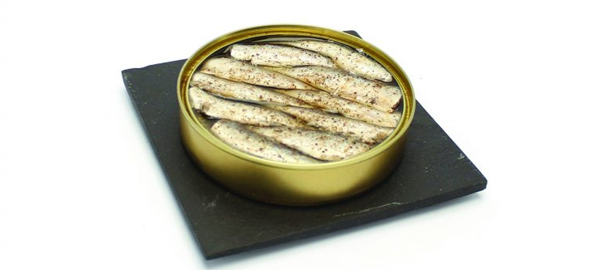
To get the most positive side of the canned sardines, will explain more about this invention and its benefits. The production of canned sardines dates back to the year 1810 which has been possible thanks to Napoleon's initiative. It was not him who had that idea, but he was the promoter of this invention as a good resolution to preserve ingredients during long time periods. By that time there was nothing to open lid, so it was simply opended with a bayonet.
By the end of the 19th century, Brittany was leading the canned sardines international market and France even had the monopoly of canned products, but Spain and Portugal followed its example and ousted them. Looking at the actual canned sardines, they have nothing to do with the ones long ago: it was the poor's food or for lower social classes.
Sardines nowadays
Since some time ago, some canned fishes are considered a delicacy (at least high quality canned sardines and anchovies) and nowhere like Spain to appreciate it. In Galicia, the capture begins in June when sardines are at their maturity and firmness point preserving the fish flavour a bit sour. The fishes are carefully handly selected and scaled.
It is important not to forget sardines are very healthy, so they have a low n-3 fatty acids. Once the can opened, the sardines can be served from the can or with bread with butter or fresh tomatoes.
Now, there are good news for sardines lovers and defenders. Scientists at the American Fisheries Institute of the Ocean and Atmospheric Administration have observed sardines in oceans over the years. They examined catching conditions in trawl nets and calculated being based on the quantities of fish eggs found there. The result of these investigations comes up with an amazing conclusion: "The natural sardines development is not longer in danger. On the contrary, the amount of these fish tends to increase"

Conclusion about sardines study
They confirmed that the population of predatory fish, such as cods and tunas, was reducted over the past 100 years and declined by approximately two-thirds. The total amount of "forage fishes", such as sardines and anchovies has been doubled in the last century. Those fishes are normally the food for the largest part of the sea devourers. "By eliminating the most dangerous ones, they are creating a favorable situation for those who were their prey."
The decline of large predators is also associated with the increase of the global fishing capacity. From 1950 to 2010, this has increased by 54% without major changes in the recent years. Extensive fishing in our oceans hasa similar effect to "When the cat is out, the mice dance." In other words, the removal of large species and predators of the ocean makes small fishes can develop better.
So the scientists, who have carried out the most complete analysis ever done about fish population in the world's oceans and how they have changed over the last century, said: "It is advisable to reduce the consumption of tuna and cod, and fill the dishes with sardines and anchovies if we want to contribute to save endangered species and embalance our ecosystem."
Posted in: OtherRelated products
Dardo cockles natural 70/80 pieces (Rias gallegas)
Price: €9.90Dardo cockles natural 70/80 pieces (Galician Rias).The Dardo cockle are...Clams nature 20-30 pieces Dardo (Rias Gallegas)
Price: €23.50The natural clams Dardo 25 pieces (Galician Rias) is a delicacy unique in...Mussels in escabeche Dardo 12/16 (Galician Rias)
Price: €3.40The Mussels in escabeche Dardo come exclusively from "Galician Rias"...Clams Ramón Peña (Rias Gallegas) 20/25 units
Price: €19.90The Ramon Peña Clams are a real delicacy for gourmet seafood lovers.Is one...Little squids in olive oil Dardo 8/10 units
Price: €6.45The Little squids in olive oil Dardo 8/10 units come from the waters of the...Agromar Sea Urchin Caviar (sea urchin roe) 120g
Price: €29.80Agromar sea urchin caviar is made of sea urchin roe and a little of salt,...Mussels in escabeche Dardo 8/12 (Galician Rias)
Price: €3.60The Mussels in escabeche Dardo come exclusively from "Galician Rias"...Variegated scallops in scallop sauce Dardo
Price: €3.30The variegated scallops in scallop sauce are one of the most popular seafood...Cockles in brine Ramón Peña 30/40 (Rías gallegas)
Price: €13.90Cockles in brine Ramon Peña (Galician Rias) Ramon Peña Cockles are 100%...Mussels fried in pickled sauce Ramón Peña (Rias gallegas) 6-8 Uds "Black label"
Price: €14.90Marinated mussels fried in pickled sauce (Ramón Peña) Galician Rias. Sea...Mussels in spicy escabeche Dardo 12/16 (Galician Rias)
Price: €2.40The Mussels in spicy escabeche Dardo come exclusively from "Galician Rias"...Octopus in olive oil Frinsa 111gr.
Price: €8.20The Frinsa’s octopus in olive oil came from Galician estuaries, which...Hake Roe Agromar
Price: €4.50The Hake Roe Agromar is a dish prepared at the height of the most demanding...BOX x50 - Variegated scallops in scallop sauce Dardo
Old price: €165.00 Price: €148.50 Discount: 10% Save up: -€16.50BOX x50 - Clams nature 20-30 pieces Dardo (Rias Gallegas)
Old price: €1,175.00 Price: €1,057.50 Discount: 10% Save up: -€117.50BOX x50 - Dardo cockles natural 30/35 pieces (Rias gallegas)
Old price: €495.00 Price: €445.50 Discount: 10% Save up: -€49.50BOX x50 - Dardo cockles natural 35/45 pieces (Rias gallegas)
Old price: €495.00 Price: €445.50 Discount: 10% Save up: -€49.50BOX x50 - Little squids in olive oil Dardo 8/10 units
Old price: €322.50 Price: €290.25 Discount: 10% Save up: -€32.25BOX x15 - Clams Ramón Peña (Rias Gallegas) 20/25 units
Old price: €298.50 Price: €268.65 Discount: 10% Save up: -€29.85BOX x12 - Mussels fried in pickled sauce Ramón Peña (Rias gallegas) 6-8 Uds "Black label"
Old price: €178.80 Price: €160.92 Discount: 10% Save up: -€17.88BOX x24 - Hake Roe Agromar
Old price: €108.00 Price: €97.20 Discount: 10% Save up: -€10.80BOX x30 - Agromar Sea Urchin Caviar (sea urchin roe) 120g
Old price: €894.00 Price: €804.60 Discount: 10% Save up: -€89.40Hamper cans SEA AND MOUNTAIN - Agromar & Arbeyal
Price: €48.00Cockle 30/40 La Piedad
Price: €10.90The cockles La Piedad 30/40 come from the Galician estuary, natural,...Darduliñas with ajillo Dardo 120g
Price: €2.50Dardo garlic darduliñas are an exquisite option. This delicacy is usually...Darduliñas with spicy garlic Dardo 120g
Price: €2.50Darduliñas with spicy garlic are an exquisite choice. This recipe is...Natural Cockles 45/55 La Piedad
Price: €6.90The fresh cockles Natural 45/55 ''La Piedad'' from Holland, these cockles...Ventresca Bonito (BELLY) del Norte Olive Oil , Los Peperetes
Price: €13.20The Ventresca Bonito (BELLY) , also known as the most delicious part of...Natural Clams 30 pieces, Los Peperetes (Rias Gallegas)
Price: €39.00The Natural Clams, Los Peperetes (Rias Gallegas) are a fresh and flavorful...Sardines in Escabeche 120 g, Los Peperetes
Price: €10.90The Sardinillas en Escabeche from los Peperetes merge the freshness of the...Natural Razor Clams 6/8 Pieces, Los Peperetes (Rias Gallegas)
Price: €18.90The Natural Razor Clams 6/8 pieces are harvested directly from the Galician...Natural Cockles, Los Peperetes 120 gr (Rias Gallegas)
Price: €29.90Meticulously selected by experienced shellfish gatherers, Los Peperetes...Ventresca de Bonito Airas Moniz Butter, Los Peperetes
Price: €18.50The Ventresca de Bonito Airas Moniz Butter, a gourmet delight that combines...Snow Crab in Natural, Los Peperetes
Price: €27.90The Snow Crab in Natural, los Peperetes emerges from the cold waters of the...Preserves Barnacles in Natural, Los Peperetes (Rías Gallegas)
Price: €22.90The Natural Barnacles from Los Peperetes, originating from the Galician...Pickled mussels 10/12 pieces, Los Peperetes (Galician Rias)
Price: €12.90The 10/12 Pieces Pickled Mussels from Los Peperetes, originating from the...Sardines in Olive Oil 120 g, Los Peperetes
Price: €10.90Sardines in Olive Oil from los Peperetes merge, the freshness of the sea...Clear Tuna Belly Olive Oil Dardo 120ml
Price: €5.90Sardines in Olive Oil 125 ml Dardo
Price: €2.30Sardines in olive oil Dardo are a real delicacy for Gourmets. This sardines...Mussels in escabeche Dardo 18/24 (Galician Rias)
Price: €2.20The Mussels in escabeche Dardo come exclusively from "Galician Rias"...Sardines in Tomato Sauce 125 ml Dardo
Price: €2.10Sardines in Tomato Dardo are a real delicacy for Gourmets. This sardines in...Sardines in Escabeche 125 ml Dardo
Price: €2.10Sardines in Escabeche Dardo are a real delicacy for Gourmets. This sardines...Light Tuna in Red Escabeche Dardo 1800 gr.
Price: €21.90Light Tuna in Olive Oil Dardo 1000 gr
Price: €16.90Light Tuna in Sunflower Oil Dardo 1800 gr
Price: €22.40Mussels in escabeche SPYCE Dardo 18/24 (Galician Rias)
Price: €2.20The Mussels in escabeche SPYCE Dardo come exclusively from "Galician Rias"...Squid in Its Ink, Los Peperetes 120g (Rias Gallegas)
Price: €9.20Los Chipirones en su Tinta, Los Peperetes 120g (Rías Gallegas) are cleaned...Octopus with Paprika, Los Peperetes 120g (Rías Gallegas)
Price: €16.50The Octopus with Paprika, Los Peperetes 120g (Rías Gallegas). Considered the...Ramón Peña Sardines in spicy olive oil (20-25 units) "Black Label"
Price: €9.60The Ramón Peña Sardines in spicy olive oil "Black series" are a delicious...Little sardines in spicy olive oil Ramón Peña 12/16 units
Price: €4.25The little sardines in spicy olive oil Ramón Peña (12/16 units) come from...Sardines in olive oil 12/18units Dardo
Price: €2.50Sardines in olive oil Dardo are a real delicacy for Gourmets. This sardines...Ortiz White tuna (whole loins) in olive oil 400g
Price: €12.50The Ortiz White Tuna in olive oil is angled by sailors in the rough waters...Ramón Peña Sardines in olive oil (20/25 units) "Black Label"
Price: €9.70The Ramón Peña Sardines in olive oil "Black series" are a delicious typical...White Tuna in Organic Extra Virgin Olive Oil Ortiz 112gr.
Price: €4.50The White Tuna in Organic Extra Virgin Olive Oil Ortiz is caught by sailors...White Tuna in Olive Oil Ortiz 112gr
Price: €3.90The White Tuna in Olive Oil Ortiz is caught by sailors following...White Tuna in Olive Oil Ortiz 250gr
Price: €9.90The White Tuna in Olive Oil Ortiz is caught by sailors following...Little sardines in olive oil Ramón Peña (40/50 units)
Price: €14.10The little sardines in olive oil Ramón Peña (40/50 units) come from Galician...Ortiz White tuna in olive oil 220gr
Price: €9.20The Ortiz White Tuna in olive oil is angled by sailors in the rough waters...Little sardines in olive oil Ramón Peña 16/20 units
Price: €5.50The little sardines in olive oil Ramón Peña (16/20 units) come from Galician..."Xouba" fried stewed sardines from Galicia Ramón Peña "Black Label"
Price: €8.10The "Xoubas" fried stewed sardines Ramon Peña “Black Label” came from the...Cantabrian Anchovies in olive oil Yurrita 50g
Price: €4.90Cantabrian Anchovies in olive oil Yurrita, the best anchovies in the Bay of..."Ventresca" Albacore tuna in olive oil Yurrita
Price: €10.90"Ventresca" Albacore tuna in olive oil Yurrita, the most delicious part of...Yellowfin Tuna in Olive Oil Dardo 240g
Price: €4.90The Yellowfin Tuna in Olive Oil Dardo is an exquisite, this kind of tuna is...White Tuna "Bonito del Norte" of Yurrita in Extra Virgin Olive Oil 190g
Price: €8.90The White Tuna - Bonito del Norte of Yurrita in Extra Virgin Olive Oil is a...Sardines in Olive Oil of Ramón Peña (30/35 units) Black Label
Price: €10.80The little sardines in olive oil of Ramón Peña (30/35 unidades) Black Label...Anchovies Ortiz in olive oil 450g Serie Oro 67-75 units
Price: €59.70Those anchovies Ortiz in olive oil (67-75 units) has been catched in the...Albacore tuna in olive oil Yurrita - 112gr
Price: €3.45The Yurrita's albacore tuna in olive oil is such a delicious product. It is...“Ventresca” albacore tuna in olive oil 111 gr. frinsa
Price: €12.90This Frinsa’s ventresca albacore tuna in olive oil 111 gr. is done using the...Yellowfin Tuna in Olive Oil Dard (Pack 3)
Price: €4.50The Yellowfin Tuna in Olive Oil Dardo is an exquisite, this kind of tuna is...Bluefin tuna back in olive oil Herpac 245gr.
Price: €19.50This bluefin tuna back in olive oil from Herpac is an excellent gourmet...Bluefin tuna "Ventresca" in olive oil Herpack 245gr.
Price: €27.50This bluefin tuna "Ventresca" in olive oil from Herpac is an excellent...Cod in Extra Virgin Olive Oil, 120g Frinsa
Price: €3.90The Cod in Extra Virgin Olive Oil 120g Frinsa is presented crumbled and...Mackerel fillets in organic extra virgin olive oil Minerva 120g
Old price: €4.80 Price: €4.32 Discount: 10% Save up: -€0.48Mackerel fillets in extra virgin olive oil Minerva 120g come from the...Eels in Olive Oil Agromar
Price: €27.90The Eels in Olive Oil Agromar is a meal prepared at the height of the most...BOX x50 - Sardines in olive oil 12/18units Dardo
Old price: €125.00 Price: €112.50 Discount: 10% Save up: -€12.50BOX x40 - Yellowfin Tuna in Olive Oil Dard (Pack 3)
Old price: €180.00 Price: €162.00 Discount: 10% Save up: -€18.00BOX x50 - Baby squids in its own ink Dardo
Old price: €245.00 Price: €220.50 Discount: 10% Save up: -€24.50BOX x24 - Sardines in Olive Oil of Ramón Peña (30/35 units) Black Label
Old price: €259.20 Price: €233.28 Discount: 10% Save up: -€25.92BOX x12 - Small sardines in olive oil Ramón Peña 25-30 units "Black label"
Old price: €115.20 Price: €103.68 Discount: 10% Save up: -€11.52BOX x12 - Ramón Peña Sardines in spicy olive oil (20-25 units) "Black Label"
Old price: €115.20 Price: €103.68 Discount: 10% Save up: -€11.52BOX x24 - Little sardines in olive oil Ramón Peña 16/20 units
Old price: €132.00 Price: €118.80 Discount: 10% Save up: -€13.20BOX x24 - Little sardines in spicy olive oil Ramón Peña 12/16 units
Old price: €102.00 Price: €91.80 Discount: 10% Save up: -€10.20BOX x16 - Little sardines in olive oil Ramón Peña (40/50 units)
Old price: €225.60 Price: €203.04 Discount: 10% Save up: -€22.56BOX x12 - "Xouba" fried stewed sardines from Galicia Ramón Peña "Black Label"
Old price: €97.20 Price: €87.48 Discount: 10% Save up: -€9.72BOX x12 - Ramón Peña white clams 18/20 "Black Label"
Old price: €525.00 Price: €472.50 Discount: 10% Save up: -€52.50BOX x24 - Ramón Peña Sardines in olive oil (20/25 units) "Black Label"
Old price: €232.80 Price: €209.52 Discount: 10% Save up: -€23.28BOX x24 - Eels in Olive Oil Agromar
Old price: €669.60 Price: €602.64 Discount: 10% Save up: -€66.96BOX x6 - Bluefin tuna "Ventresca" in olive oil Herpack 245gr.
Old price: €165.00 Price: €148.50 Discount: 10% Save up: -€16.50BOX x6 - Bluefin tuna back in olive oil Herpac 245gr.
Old price: €117.00 Price: €105.30 Discount: 10% Save up: -€11.70BOX x12 - Cantabrian Anchovies in olive oil Yurrita 50g
Old price: €58.80 Price: €52.92 Discount: 10% Save up: -€5.88BOX x12 - "Ventresca" Albacore tuna in olive oil Yurrita
Old price: €130.80 Price: €117.72 Discount: 10% Save up: -€13.08BOX x12 - White Tuna "Bonito del Norte" of Yurrita in Extra Virgin Olive Oil 190g
Old price: €106.80 Price: €96.12 Discount: 10% Save up: -€10.68BOX x12 - Albacore tuna in olive oil Yurrita - 112gr
Old price: €41.40 Price: €37.26 Discount: 10% Save up: -€4.14BOX x30 - White Tuna in Organic Extra Virgin Olive Oil Ortiz 112gr.
Old price: €135.00 Price: €121.50 Discount: 10% Save up: -€13.50BOX x30 - Bonito del norte Ortiz en aceite de oliva 112gr
Old price: €117.00 Price: €105.30 Discount: 10% Save up: -€11.70BOX x30 - White Tuna in Olive Oil Ortiz 250gr
Old price: €297.00 Price: €267.30 Discount: 10% Save up: -€29.70BOX x12 - Ortiz White tuna in olive oil 220gr
Old price: €110.40 Price: €99.36 Discount: 10% Save up: -€11.04BOX x6 - Anchovies Ortiz in olive oil 450g Serie Oro 67-75 units
Old price: €358.20 Price: €322.38 Discount: 10% Save up: -€35.82BOX x12 - Mackerel fillets in organic extra virgin olive oil Minerva 120g
Old price: €57.60 Price: €51.84 Discount: 10% Save up: -€5.76Galician Cape Hake Frinsa 120 g
Price: €4.20The Galician Cape Hake Frinsa 120 gr comes from the Galician Rías, which...Little sardines in olive oil Frinsa 120g
Price: €3.90Those Little sardines in olive oil Frinsa 120g came from Galician estuary,...Smoked Salmon in Extra Virgin Olive Oil 120 g Frinsa
Price: €6.90Smoked Salmon in Extra Virgin Olive Oil 120g. Frinsa is caught in the...Codfish in pil pil sauce 120 g Frinsa
Price: €6.90Codfish in pil pil sauce 120 g Frinsa is caught in the Atlantic Ocean area....Sardines in spicy tomato Frinsa 88g
Price: €3.90Sardines in spicy tomato Frinsa 88g come from the Galician Rías, which...White tuna in pickled sauce Ortiz 112g
Price: €3.70Pickled white tuna stands out for its fine flavour, smooth texture and the...Canned Food Hamper
Old price: €65.50 Price: €55.67 Discount: 15% Save up: -€9.82Peperetes Premium Preserves Hamper
Price: €142.20BOX x 12: White Tuna Ortiz (Whole Loins) 400g
Old price: €150.00 Price: €135.00 Discount: 10% Save up: -€15.00BOX x 12: White tuna belly fillets in olive oil 111g Frinsa
Old price: €154.80 Price: €139.32 Discount: 10% Save up: -€15.48BOX x 12: Cod in Extra Virgin Olive Oil, 120g Frinsa
Old price: €46.80 Price: €39.78 Discount: 15% Save up: -€7.02BOX x 12: Small sardines in olive oil 120g Frinsa
Old price: €46.80 Price: €42.12 Discount: 10% Save up: -€4.68BOX x 12: Cape hake Galician style Frinsa 120 g
Old price: €50.40 Price: €45.36 Discount: 10% Save up: -€5.04BOX x 12: Octopus in olive oil Frinsa 111g
Old price: €98.40 Price: €88.56 Discount: 10% Save up: -€9.84BOX x 12: Smoked Salmon in Extra Virgin Olive Oil 120 g Frinsa
Old price: €82.80 Price: €74.52 Discount: 10% Save up: -€8.28BOX x 12: Sardines in spicy tomato Frinsa 88g
Old price: €46.80 Price: €42.12 Discount: 10% Save up: -€4.68CAJA x 12: Codfish in pil pil sauce 120 g Frinsa
Old price: €82.80 Price: €74.52 Discount: 10% Save up: -€8.28Related posts
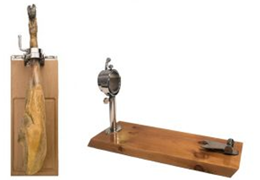 How to choose your perfect ham holder? Over-table or wall ham holder?
06/07/20171048 LikesWith the arrival of winter, festivities and christmas holidays we love enjoying the best fooding products as hams....Read more
How to choose your perfect ham holder? Over-table or wall ham holder?
06/07/20171048 LikesWith the arrival of winter, festivities and christmas holidays we love enjoying the best fooding products as hams....Read more Peppers and Mediterranean diet. Why are they so important?
Posted in: Other13/03/2017741 LikesPeppers are one of the main summer ingredients. Cooked or raw, both ways are delicious. With fresh,or cooked meals,...Read more
Peppers and Mediterranean diet. Why are they so important?
Posted in: Other13/03/2017741 LikesPeppers are one of the main summer ingredients. Cooked or raw, both ways are delicious. With fresh,or cooked meals,...Read more Sobrassada: a Balearic delicacy
Posted in: Other19/07/2014585 LikesSausages are delicious, right? In sandwich, with some bread, some others with anything else... but today we are going...Read more
Sobrassada: a Balearic delicacy
Posted in: Other19/07/2014585 LikesSausages are delicious, right? In sandwich, with some bread, some others with anything else... but today we are going...Read more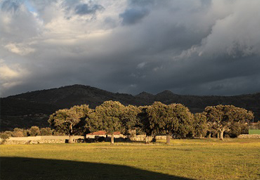 The Dehesa a unique ecosystem
24/11/2016746 LikesThe Dehesa is the natural habitat of the Iberian pig, it is a unique ecosystem that is only found in the Iberian...Read more
The Dehesa a unique ecosystem
24/11/2016746 LikesThe Dehesa is the natural habitat of the Iberian pig, it is a unique ecosystem that is only found in the Iberian...Read more Andres Iniesta and ARCOS Knifes
Posted in: Other24/05/2016425 LikesAndrés Iniesta Ambassador to ARCOS knives.Read more
Andres Iniesta and ARCOS Knifes
Posted in: Other24/05/2016425 LikesAndrés Iniesta Ambassador to ARCOS knives.Read more XVI Festival Iberian Ham Los Pedroches (Spain)
Posted in: Other24/09/2016548 LikesThe event will take place from 6 to 8 October in the famous Cordovan locality of Los Pedroches.Read more
XVI Festival Iberian Ham Los Pedroches (Spain)
Posted in: Other24/09/2016548 LikesThe event will take place from 6 to 8 October in the famous Cordovan locality of Los Pedroches.Read moreChat with us on WhatsApp
Call us or leave your details and we'll call you back asap
- Price
- Wines
- Cheeses
-
Jabugo (Huelva) Ham







